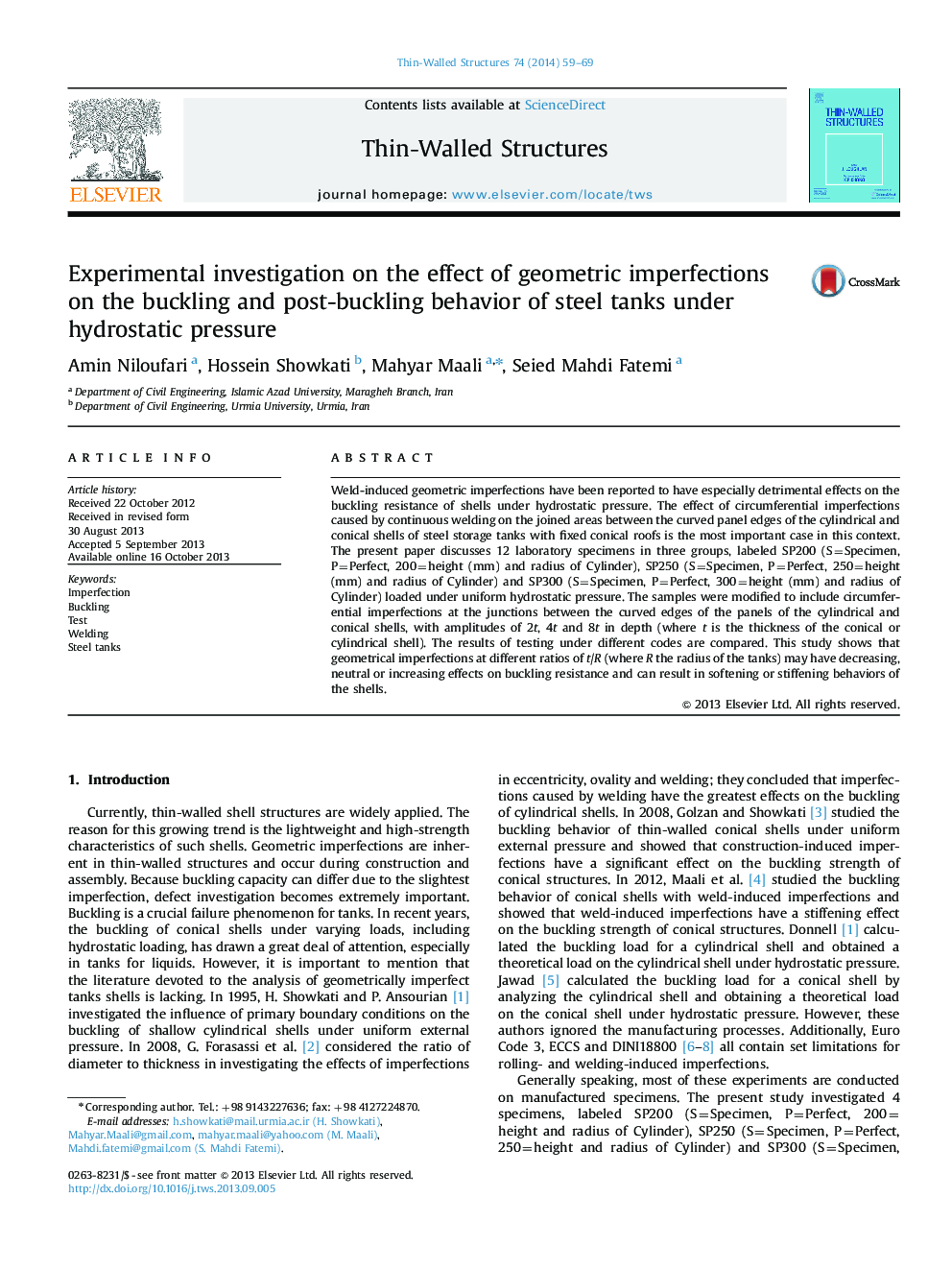| Article ID | Journal | Published Year | Pages | File Type |
|---|---|---|---|---|
| 309018 | Thin-Walled Structures | 2014 | 11 Pages |
•Twelve test specimens with various imperfection amplitudes were loaded under hydrostatic pressure.•Initial buckling of perfect specimens differed by −51% from the buckling capacity computed by the theory.•The rates tolerated by standards for geometric imperfections could be increased based on the t/R ratio and maximum depth of the imperfection.
Weld-induced geometric imperfections have been reported to have especially detrimental effects on the buckling resistance of shells under hydrostatic pressure. The effect of circumferential imperfections caused by continuous welding on the joined areas between the curved panel edges of the cylindrical and conical shells of steel storage tanks with fixed conical roofs is the most important case in this context. The present paper discusses 12 laboratory specimens in three groups, labeled SP200 (S=Specimen, P=Perfect, 200=height (mm) and radius of Cylinder), SP250 (S=Specimen, P=Perfect, 250=height (mm) and radius of Cylinder) and SP300 (S=Specimen, P=Perfect, 300=height (mm) and radius of Cylinder) loaded under uniform hydrostatic pressure. The samples were modified to include circumferential imperfections at the junctions between the curved edges of the panels of the cylindrical and conical shells, with amplitudes of 2t, 4t and 8t in depth (where t is the thickness of the conical or cylindrical shell). The results of testing under different codes are compared. This study shows that geometrical imperfections at different ratios of t/R (where R the radius of the tanks) may have decreasing, neutral or increasing effects on buckling resistance and can result in softening or stiffening behaviors of the shells.
